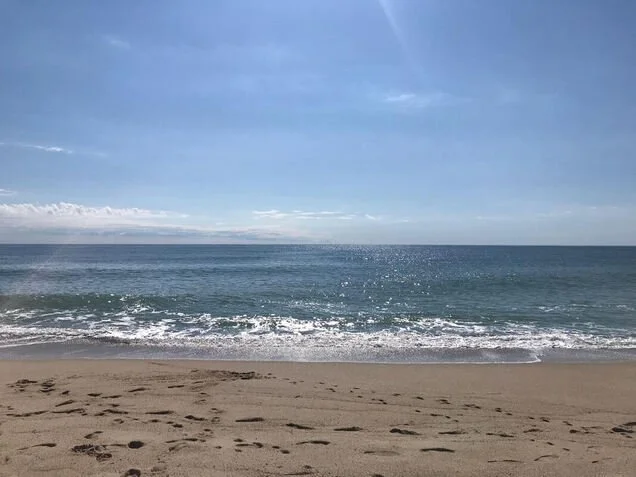THE BACK TO THE SEA CENTRE BLOG
Interested in all things ocean? Check out our blog posts below!
Meet the North Atlantic Right Whale
Written by Emma Bard, this post explores the North Atlantic Right Whale (Eubalaena glacialis), the world’s most endangered large whale species. Learn more about these magnificent giants here!
The Swift and Powerful Shortfin Mako Shark
Written by Ayane Inuzuka-Boyle, this post explores the Shortfin Mako shark (Isurus oxyrinchus) that frequents Nova Scotian waters. Learn more about these incredible predators here!
Volunteer Spotlight: Emily Baker
Meet Emily Baker, an advocate for marine life and a dedicated volunteer with Back to the Sea Society.
A Deep Blue Sea Icon: Atlantic Bluefin Tuna
Depending on who you talk to, the Atlantic bluefin tuna (Thunnus thynnus) can grow up to 13 feet, 2000 pounds, and 40 years of age. Bluefins are the biggest and fastest of all tuna species. That’s not the only thing that makes them special. Atlantic bluefin tuna are also one of the only warm-blooded fish and the most migratory of all fish!
The Curious Lives of Northern Bottlenose Whales
Laurel would ike to introduce you to one of my favourite marine species, the Northern Bottlenose whale (Hyperoodon ampullatus).
Let’s Get Ready to Rumble! Star vs. Star
If you’ve ever visited the Touch Tank Hut or been on one of our Tidal Trekker excursions, you would be familiar with the well known common sea star (Asterias rubens)! But did you know we have another star-shaped marine critter living in our ocean?
International Day of Women & Girls in Science
Last week, women and girls were celebrated across the globe for International Day of Women and Girls in Science. So many organizations posted online highlighting some of the incredible women-led projects and teams they’re proud of.
A Quick Swim Down Memory Lane
As we look ahead to welcome visitors in 2023, it is important to reflect on the past. Take a swim with me down memory lane to a sunnier, warmer time.. the summer of 2022
Animal Friendships
Winter is the perfect time to bundle up and get together with your friends and loved ones. With this in mind, we wanted to highlight some of the ocean's coolest animal friendships!
The Fibonacci Sequence: Math in Nature
Today is Fibonacci Day! The day we celebrate the Fibonacci Sequence, a pattern of numbers in which each number is the sum of the two before it - 1, 1, 2, 3, 5, 8, 13 - and so on. It’s named after the Italian mathematician, Leonardo of Pisa, later known as Fibonacci.
Sending Our Animals Back to the Sea
So many families and friends came out to the beach at Point Pleasant Park to give our sea creatures some love and say goodbye to them one last time.
The Maned Nudibranch aka Grey Sea Slug
This past season at the Touch Tank Hut, we welcomed a new animal we haven't had before; a maned nudibranch (Aeolidia papillosa)! Let's take some time to learn about this fin-tastic animal and why we at Back to the Sea think it is so claw-some.
I Spy Green Algae
Green algae (Chlorophyta) would almost always be one of my guesses as you can “spy it” everywhere: lakes, rivers, ponds, oceans, soils, snow, lichens.
Dreaming of a Touch Tank Summer
What better time than now to reminisce about the Back to the Sea Society’s Touch Tank Hut season?
It’s Spooky Sea-son!
With an estimated one million species of animal living in the ocean, the diversity of ocean life is truly amazing! While most of us might think about sea turtles, dolphins or the biggest sea creature of all, the blue whale, as our favourite underwater wonder, not every species in the ocean is quite so… photogenic.
Rhodophyta… more like Rad-ophyta!
When most individuals “see red”, they are getting angry. When we “see red”, we am getting excited because we probably just spotted red algae (Rhodophyta)!
The North Atlantic’s Own Sea Turtle: The Leatherback!
June 16th is World Sea Turtle Day! To celebrate, let's talk about a sea turtle that’s a bit closer to home than you may have realized.
How Many Oceans Are There?
June 8th is World Oceans Day—or, depending on who you ask, World Ocean Day. Why is there a debate? Surely, in an age where thousands of satellites orbit the Earth, we know how many oceans there are? But it turns out, it’s a little more complicated.




















